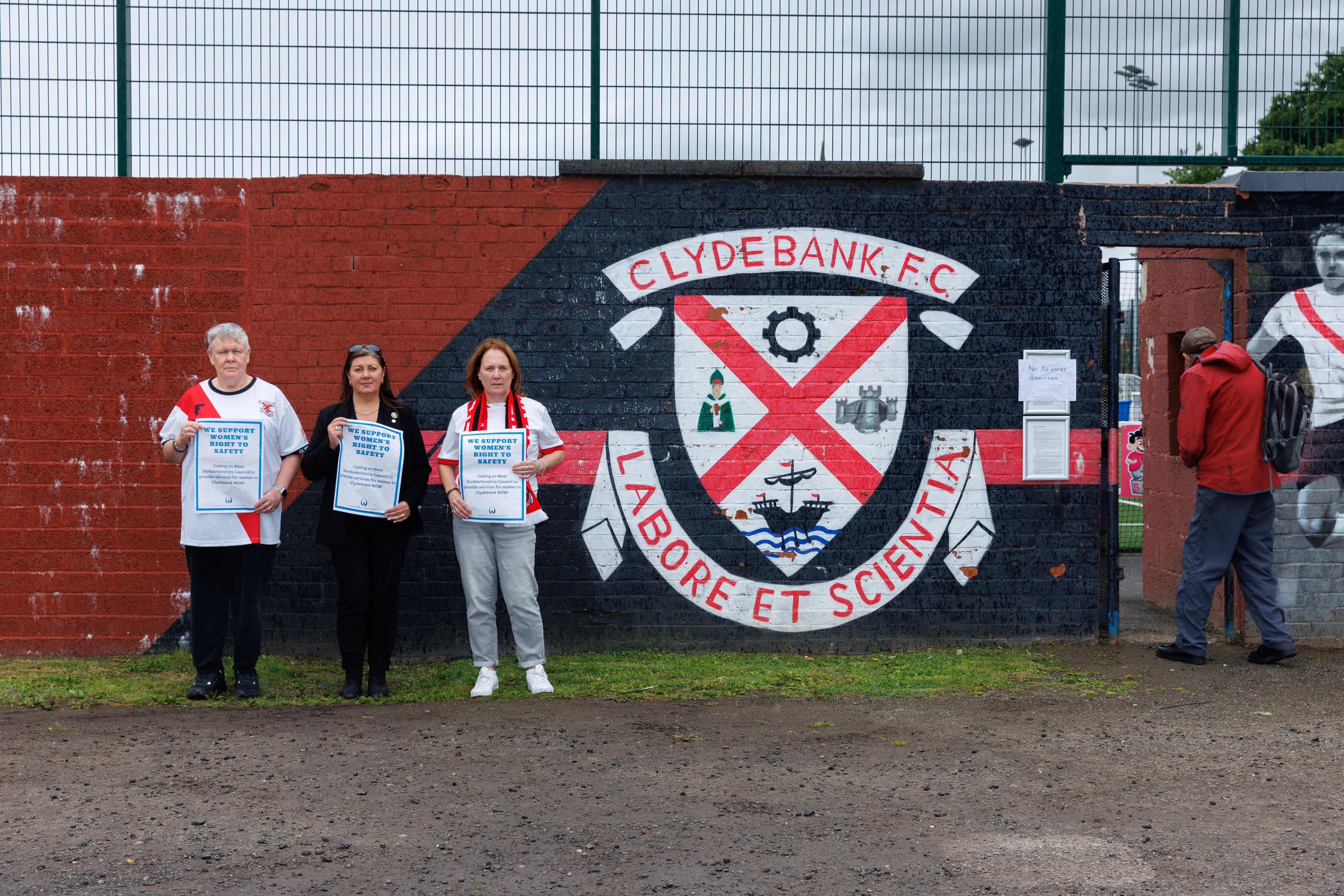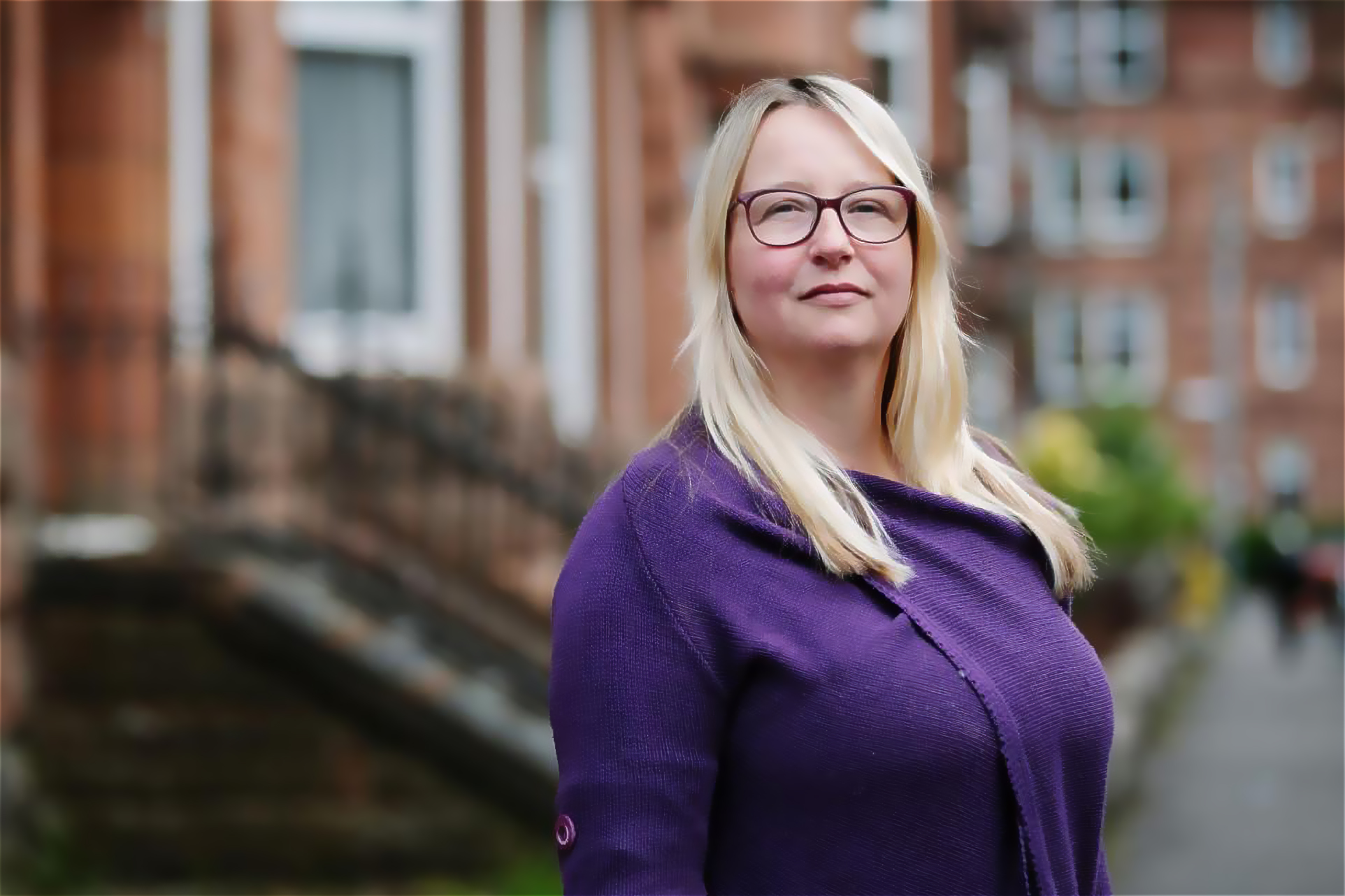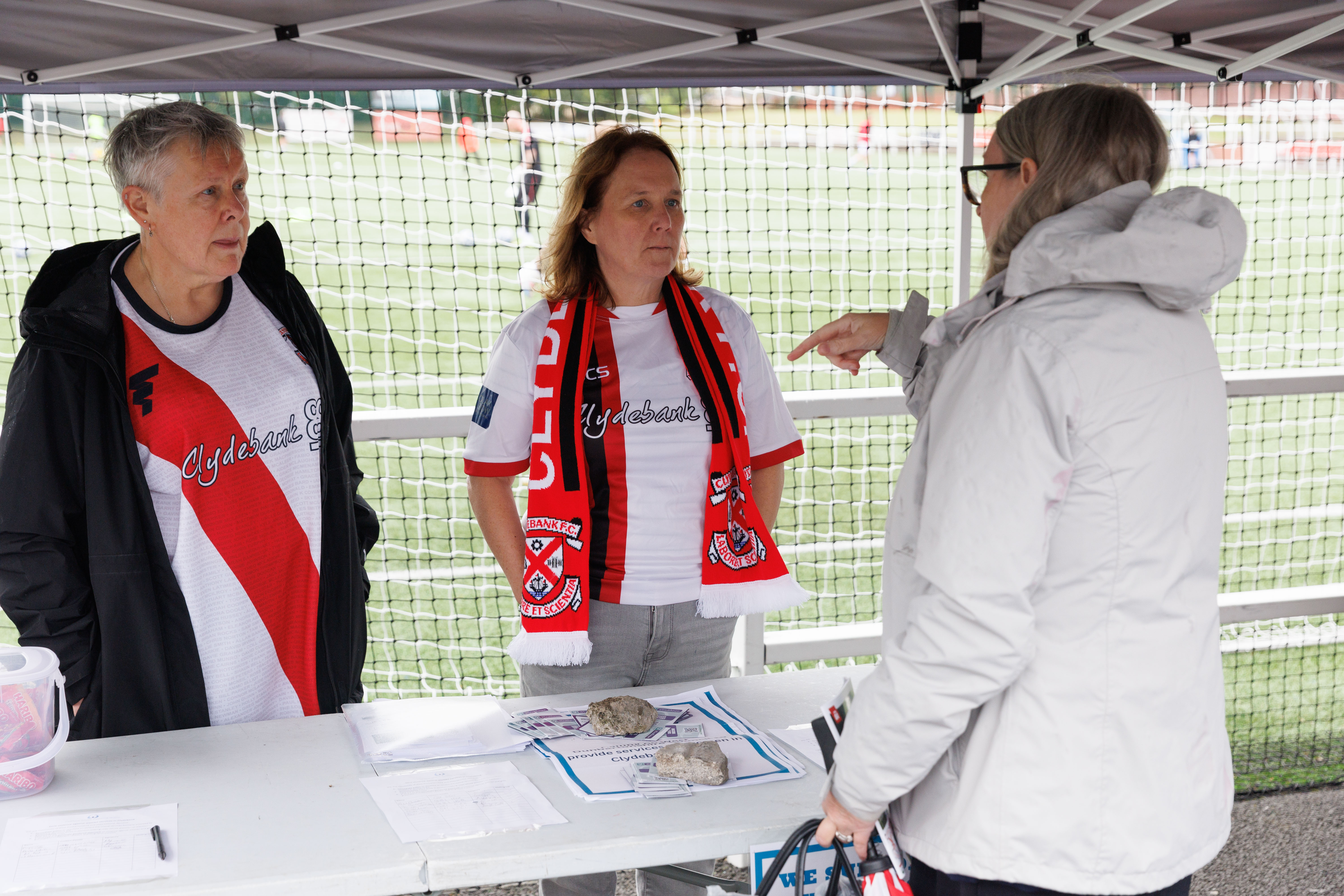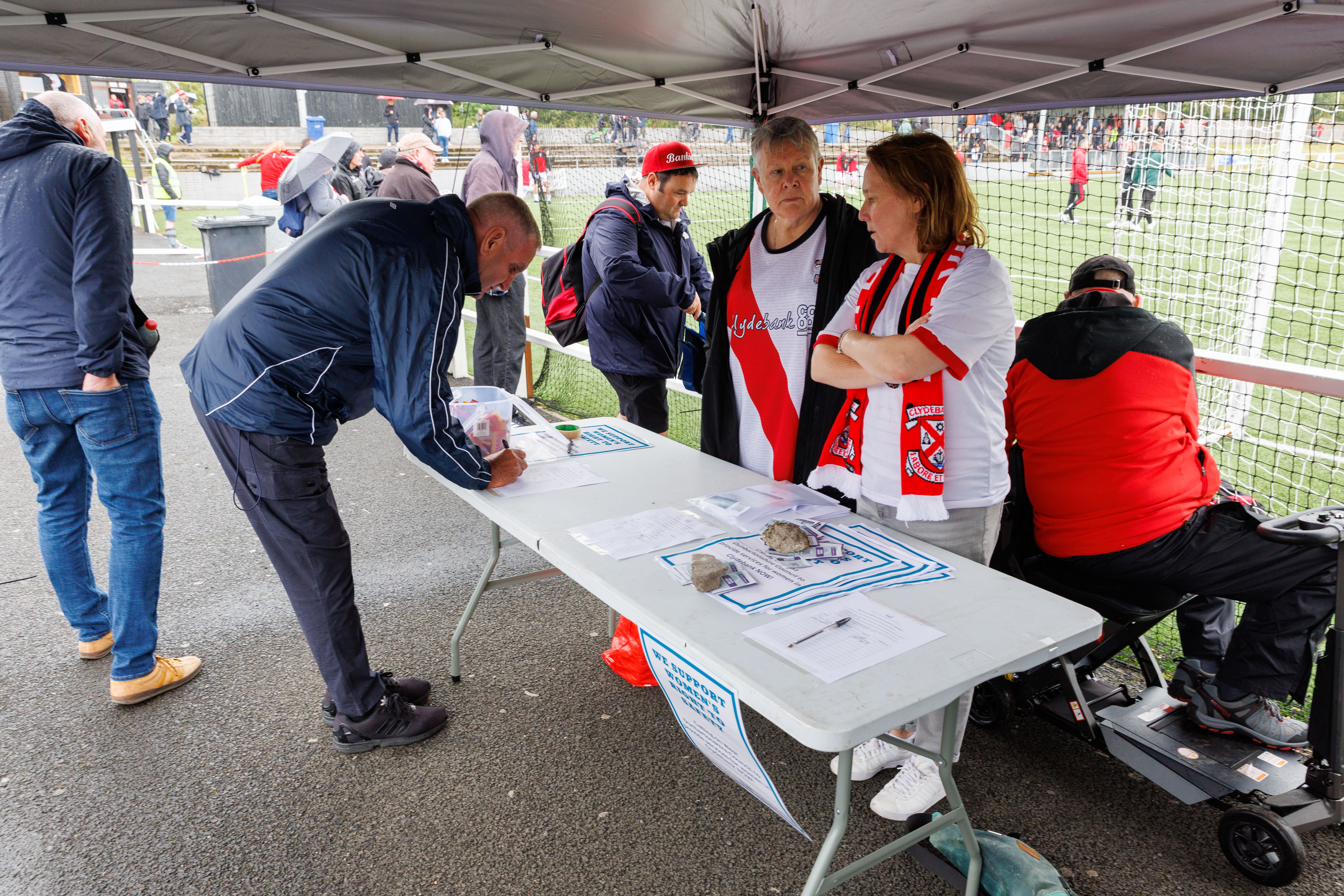Women's Aid: How secure is Scotland's domestic abuse safety net?
When Dawn Brennan was 15, she met “angels”.
The teenager had moved into a women’s refuge with her mother and five-year-old brother, escaping the domestic violence meted out at home by their father. “The first time my father beat my mother, she was pregnant with me,” says Brennan. “It was right through my childhood.”
In comparison to the tensions they had fled, the busy, noisy refuge run by Clydebank Women’s Aid (CWA) felt like an oasis of calm. Brennan’s mother called it “her Shangri-La”. “They were angels, honestly,” she says of the CWA workers who supported them. “It was a huge relief. I never knew I was fearful, and the change was phenomenal.
“I had been living with that [violence] my whole life and having to deny it, but they talked about it openly. They confirmed that reality. I had been very, very good at staying invisible. I stayed under the radar and at school I wasn’t really noticed. Within six months of going there my whole personality changed. I was talking and being visible, and my teachers were calling me a Bolshevik.”
Brennan and her family were amongst the early users of CWA and stayed in touch with the team for years – they gave her the references she needed to get her first job; they helped her mother get into college; they gave her brother, still introverted, a pet dog to help him come out of his shell.
Now that’s all over. After more than 40 years, the charity – a women’s collective – has closed, its refuge shuttered and its support groups gone after a funding battle with the local council. The service, which served a population of 26,200 people, had spent years trying to secure its finances and blamed lack of long-term support and insufficient budgets for creating problems in recruiting and keeping staff, and for limitations in the number of women and children it could help.
 Clydebank Women Supporting Women have the backing of Clydebank FC | Robert Perry
Clydebank Women Supporting Women have the backing of Clydebank FC | Robert Perry
In a farewell statement, “devastated” CWA leaders said they were “no longer in a position to provide the support that women, children, and young people in our community need”. “No woman should be left without support because a vital service couldn’t afford to continue”, they went on, issuing a plea to local and national government: “This is a call to action: for sustainable, ring-fenced funding for women’s aid groups across the country, for recognition of the scale and impact of domestic abuse, and for the right of every woman, child, and young person to live free from fear of violence and abuse.”
Ring-fenced funding ended in 2007, when then-finance secretary John Swinney announced the signing of a concordat with local government umbrella body Cosla as part of the deal to freeze council tax.
It was the first budget of the fledgling SNP administration and the party’s Gil Paterson MSP, whose West of Scotland region included Clydebank, welcomed a commitment from Swinney to address violence against women and tackle domestic abuse. But the change introduced uncertainty about the funding direction for women’s aid groups, and Paterson asked for – and received – assurance that the third sector would “continue to flourish”.
But by 2014 umbrella body Scottish Women’s Aid (SWA) was warning that nine in 10 of its member groups were working with reduced or stand-still budgets in the face of inflationary costs. Despite reductions to services and staffing, one third of members reported a deficit in the preceding financial year and almost two thirds were working with funding contracts of only one year.
Now, less than 20 years on from that concordat and after austerity, local budgets have been “salami-sliced”, according to sociologist Professor Nancy Lombard, who says women’s aid groups – independent charities responsible for their own budgets and priorities – are having to do “more with less”.
Based at Glasgow Caledonian University, Lombard – whose work on violence against women has seen her address the UN and advise the Scottish Government – could hardly be more expert. A member of the Scottish Parliament’s Cross-Party Group on Men’s Violence Against Women and Children, she was a core part of the European Commission’s (EC) network of experts on gender equality and is co-leading the EC-funded Iseda project (Innovative Solutions to Eliminate Domestic Abuse), which is working across nine states.
She says Scotland’s network of women’s aid groups are doing “amazing” work and, unlike sister services in England and Wales, have the back-up of government funding. But she says there is a prevailing expectation that they can “do everything” with dwindling support. “We know that’s linked to austerity”, she goes on. To improve stability in a sector providing lifeline support to vulnerable women and children, her answer is simple: “We need more money. But I don’t know where it’s coming from.”
Making Noise
CWA’s closure was announced after its core grant was listed amongst potential savings options by West Dunbartonshire Council (WDC) officials working on the most recent budget. A short, sharp campaign saw protesters gather outside the authority’s offices in March and councillors opted not to cut the £125,000 sum. But £42,000 had been lost through cuts to cash allocated through the Housing Revenue Budget. And when another source of support came to an end one month later – Scottish Government cash distributed through SWA to address waiting lists – total losses had hit more than £60,000 and leaders said they could no longer go on.
“For over four decades, Clydebank Women’s Aid has been more than just a service – it has been our passion, our purpose, our identity, and our lives,” said CWA workers. “This decision has not been made lightly, and we are devastated that it has come to this.”
Around 330 women sought help from CWA in the year to April 2024 and the charity’s accounts record the “strain” it was operating under amidst rising demand and tight budgets. “Where are women and children supposed to go?” one woman commented on its Facebook account.
Dumbarton & District Women’s Aid, with its premises 13.5 miles away, began receiving calls for help. So too did WA groups in Paisley, Kirkintilloch and Glasgow. “Categorically, we are seeing, feeling and hearing the impact,” says Glasgow Women’s Aid chief executive Angela Devine. “It feels like we’re going back to where we started, with Clydebank closing. Where our sisters fought for refuge provision in the 1970s it feels like we are back there again, having to fight to get funding.”
Brennan, determined to ensure cover for her community, formed Clydebank Women Supporting Women to campaign for direct services. Active online and in the town through street stalls, the group has won the backing of the Clydebank FC and plans a series of events in the coming weeks to build support for direct domestic abuse services. An online petition calling for action from WDC has attracted hundreds of signatures. “We’re making noise,” she says. “The loss of a direct service has given a message to abusers in the community. They think the women they live with have nowhere to go.”
Holyrood can reveal that talks are underway between the council, Dumbarton & District Women’s Aid and SWA to ensure “comprehensive support” is provided, with the money that would have been available to CWA there for recommissioning. But for women in the town, there is far to go.
Stark Statistics
Scotland has a domestic abuse problem – one which legislators and public bodies have been working to solve. The issue has been on the political agenda for successive parliaments, with laws changed and campaigns launched.
While it’s understood that the issue can manifest in same-sex relationships and, in some cases, in women abusing male partners, the overwhelming majority of incidents – 80 per cent – involve male violence against women and girls. The Scottish Government and its partners, including Cosla, recognise that as a major public health issue and millions is invested every year in prevention through initiatives like the £21.5m Delivering Equally Safe fund, which was established in 2014 and reached a record high this year.
And yet cases continue to rise.
In the year ending June 2025, Police Scotland recorded 2,742 crimes under the Domestic Abuse (Scotland) Act 2018 – an increase of 26 per cent over 12 months and of 63 per cent compared with the 2021 level. The act introduced a new offence of engaging in a course of abusive behaviour towards a partner or ex-partner, putting that onto the statute books alongside other forms of harm: rape, assault, threat, coercive control, financial exploitation. The latest figures show increases in all but seven local authority areas, and in two of those the change wasn’t recorded. East Renfrewshire saw incidents rise by 150 per cent – the highest level in the country – while there was an 84 per cent jump in North Lanarkshire.
The change comes alongside a five per cent national increase in sexual crimes, including rape and attempted rape, indecent photos of children, prostitution-related offences and sexual assault.
Crown Office figures show 30,227 charges reported over the period with a domestic abuse identifier, most of which involved bail offences and other crimes against public justice, threatening and abusive behaviour, and common assault.
 Professor Nancy Lombard | Image: Glasgow Caledonian University
Professor Nancy Lombard | Image: Glasgow Caledonian University
Studies link experience of domestic abuse to poorer mental health and wellbeing in women, increasing the risk of suicidal ideation and suicide. Research for the London-based Agenda alliance, which combats violence against women and girls, found half of those with mental health problems have experienced abuse, and 20 per cent of those who endured extensive harms in childhood and adulthood have self-harmed. Further research has linked it to increased risk of premature birth and low birthrate, and domestic abuse is one of the leading child protection concerns. For 2021-22, it made up nearly 50 per cent of all registrations in Scotland.
More recently, the University of Glasgow found that women who experience domestic violence are at higher risk of traumatic brain injury almost 30 years after escaping their abusers.
And so while the prevention agenda is very necessary, so too are services responsive to the needs of victims.
“It’s that question everyone comes back to: why is nothing changing?” Lombard says of the crime stats. “Yes, we want to focus on prevention, but also we’re also looking at provision.”
But insecure funding means women’s aid groups are “always under threat”, a source from the sector tells Holyrood. “If you get three years’ funding, you’re excited. It’s very piecemeal, it’s very subject to the whims of people. For such a serious sector, for it to pivot round about changes in policy is quite challenging.” She describes the collapse of CWA as an “extreme example”. But there are widespread concerns about the impacts of short-term funding in straitened financial times.
“We are going into the last six months of the current arrangements for the Delivering Equally Safe fund,” says another, “and we get brilliant support from [the government’s] Equalities Unit. But the reality is there’s a political question here – nobody knows what’s going to happen after the 31st of March when the period ends. Everybody’s on tenterhooks to see.”

CWSW collecting petition signatures at Holm Park | Robert Perry
Shifts in the equalities agenda have also affected funding decisions. In 2021, North Lanarkshire Council did not renew its funding to three local women’s aids because it determined that an outside provider, Sacro, would provide more support for “specific groups including LGBT+ and BAME and also with respect to male victims”. “Whoever came in and said they were working directly with men had the greater hand,” said one insider. “We didn’t stand a chance.”
That contract was extended last year, while elsewhere Highland Council issued a Public Information Notice seeking a single service provider to cover the entire 10,000 square mile region, where four women’s aid teams – Inverness, Lochaber, Sutherland, and Ross-shire and Skye – collectively serve more than 1,000 women and 250 children per year. Here, the authority also sought a service catering to men. No final decision has yet been taken, but the local groups – each decades old – said awarding an outside contract could force them to close.
And earlier this year a Green councillor sought a “review” of Edinburgh’s contracts and agreements with domestic abuse services because Edinburgh Women’s Aid (EWA) was running women-only support groups alongside other services. “We operate a fine balance,” stated EWA chief executive Linda Rogers at the time, saying her service “will always prioritise women’s feelings of safety in [its] service provision and work in line with [its] trauma-informed principles.”
Lombard says this is “a sensitive subject”. Any push towards a “gender-neutral model” of tackling domestic abuse which tries to “treat everyone equally” ignores the realities at play, she explains. “I’m not trying to say we shouldn’t fund any services. But when we’re looking at the figures and we’re seeing that this is an issue that affects women and girls disproportionately, then to give the same amount of money, or a proportional amount of money, to services that focus on men… We know that that men need different things. Men as victims need different things.”
She points to research carried out for the then-Scottish Executive in the early 2000s. Lombard was part of a team interviewing men who had, in the Scottish Crime Survey, reported that they were victims of domestic abuse. It turned out that for some, that meant experiencing a burglary or fighting with another man at home. Others were perpetrators – a warning, Lombard says, about interpeting figures. “When we interviewed the men who said they were victims, they didn’t need refuge space, they weren’t in fear for their lives to the same extent that women were, they often had jobs, they had financial means. So it’s not that we’re saying, ‘let’s not fund these services’, but it’s not a one-size-fits-all. When we’re looking at supporting male victims, often it might be telephone helplines or counselling and support services, but not necessarily housing provision. So don’t just take a block of money and divvy it up in a way that you think is equal, because that’s not equity. We need to look at what different groups of people, including different groups of women, need.”
International Picture
In Glasgow, Devine agrees, and says it takes “really experienced, knowledgeable people” to meet that need, but uncertainty about job security means committed staff can struggle to see a future in the sector. Her service saw a near 30 per cent increase in presentations of women seeking crisis support between May and June, and is working with partners in the city’s Standing Group on Violence Against Women – eight specialist organisations – to make a haven of the dear, green place.
A report for the group in 2022 estimated that violence against women and girls cost the city almost £1.19m a year in public sector outgoings and lost economic output. Carried out by Themis Training and Consultancy, it found that the eight services had aided nearly 5,000 women in 2020-21 and brought £3.5m in additional funding into Glasgow. It further estimated that the funding of violence against women services saved the public purse in excess of £6.4m, but said the organisations were “operating with standstill or reduced” cash from the council and Scottish Government.
“We could have 20 outreach workers for women in Glasgow and we still wouldn’t fulfil the need,” Devine says. “I feel like we are always holding our breath. We could do so much more if we weren’t fighting for funding all the time.”
Lombard agrees more could be done, but says Scotland remains better served than many European counterparts. “People always talk about Scotland still being ahead of the game, and I’d say it very much is.
“The organisations that we have tend to work within the gender inequality model, supporting what the government does in terms of legislation. With the countries that I’ve worked in Europe they tend to be a lot more piecemeal, and some countries don’t have the same legislation that we have. There’s less of that kind of organisational structure that our third sector has. They’ve not got that same coordination, and there’s definitely not that working together that we get here with the third sector, the police, government, organisations.”
Cosla resources spokesperson Katie Hagmann has said that while Scottish councils “want to provide the very best frontline services”, they are hamstrung by restrictions in their own funding. “We have to be really mindful of the day-to-day spending. And you know, it’s fair to say we are concerned about the funding gaps,” she told the BBC last month. “I’ve got meetings in my diary with the Cabinet Secretary for Finance ahead of the budget, to start our budget lobbying. We, as an organisation representing all 32 local authorities, have submitted evidence to the Scottish Parliament as part of the pre-budget scrutiny that takes place. So it’s something we’re acutely aware of and something that we will continue to push for, especially to get that certainty, that multi-year funding that allows us to plan and really bring forward the very best outcomes.”

CWSW collecting petition signatures at Holm Park | Robert Perry
WDC and West Dunbartonshire Health and Social Care Partnership says “tackling domestic violence and supporting those impacted by domestic abuse remains [its] priority” and its Violence Against Women and Girls (VAWG) partnership is “working to strengthen support for victims of abuse as well as focusing on prevention and education to reduce harm to those affected”.
The Scottish Government says ministers noted the CWA closure “with sadness”. “Record levels of funding have been invested in organisations that provide these vital support services to victims of domestic abuse,” a spokesperson said. “While the Scottish Government only receiving single-year funding makes multi-year funding challenging, we recognise the impact that uncertainty can have on organisations to deliver critical services.” A new £1m “fund to leave” has been announced to support up to 1,200 women to leave an abusive partner, along with their children. Meanwhile, legislation has been laid which will, if passed, add ‘sex’ as a protected characteristic to the Hate Crime Act.
In Clydebank, Dawn is heartened by the public response to her campaign. “Women are coming up to us and telling us they’ve used the service,” she says. “Even the men have been supportive. It didn’t used to be like that.”
She recalls going out to raise money for CWA and SWA at the age of 16. Thanks to the support they got, her family became one of the first to benefit from the Matrimonial Homes Act, which gave women the option of removing the abuser from their home, instead of leaving and seeking rehousing. One day, Dawn was collecting donations on the street and a man handed over some cash before turning back to ask her what cause she was supporting. “When I told him, he said ‘I want my money back, I thought it was for the dogs’,” she remembers.
Holyrood Newsletters
Holyrood provides comprehensive coverage of Scottish politics, offering award-winning reporting and analysis: Subscribe